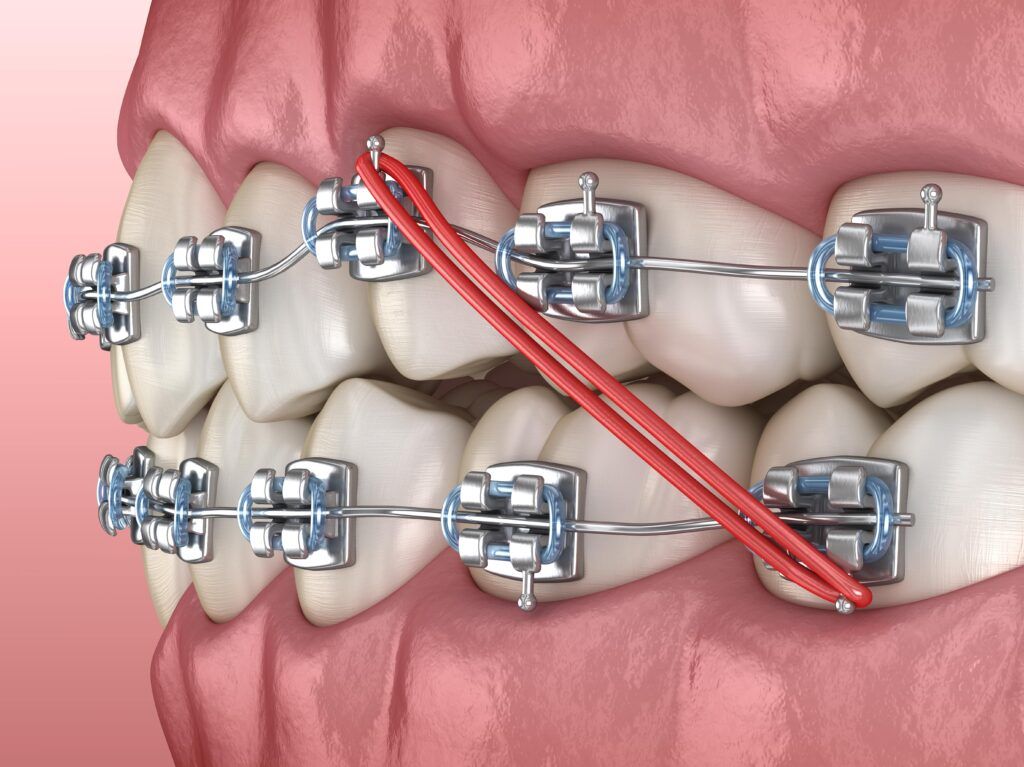Expert Cumming Braces and Aligners: What to Know Prior To You Check out
Wiki Article
Comprehensive Guide to Orthodontics Procedures for Fixing Oral Imbalances
In the world of orthodontics, the trip to achieving a perfectly aligned smile includes a myriad of treatments tailored to fix dental imbalances. From typical braces to unseen aligners and also medical options, the field of orthodontics uses an array of options to resolve differing degrees of dental irregularities. Comprehending the intricacies of each procedure, including their systems, advantages, and possible drawbacks, is crucial in making notified decisions regarding one's orthodontic treatment. As we browse via the comprehensive guide to orthodontic procedures for dealing with dental misalignments, the elaborate information of each technique will certainly unfold, clarifying the path toward a practical and harmonious dental positioning.Orthodontic Procedures Summary

In addition to clear aligners and traditional dental braces, orthodontists may additionally advise various other treatments like headgear, palatal expanders, or retainers to resolve details positioning concerns (cumming orthodontist). These procedures are customized to each individual's special requirements and may involve a combination of treatments to attain the preferred results. Regular modifications and monitoring are essential components of orthodontic therapy to make certain progress gets on track and to make any kind of required adjustments along the way. By undertaking orthodontic treatments, clients can not just achieve a straighter smile however also improve their total dental health and feature.
Conventional Dental Braces: Exactly How They Work
When thinking about orthodontic treatments for dental misalignments, typical dental braces attract attention as a time-tested method for dealing with teeth positioning. Typical dental braces are composed of brackets, wires, and bands that interact to use continuous stress on the teeth, progressively moving them right into the preferred placement. The braces are connected to the teeth utilizing an unique adhesive, and the cables are threaded with the brackets. By readjusting the tension of the wires, orthodontists can control the instructions and force put on each tooth, leading them right into proper alignment in time.
As pressure is used to the teeth with the dental braces, the bone surrounding the teeth is reshaped to sustain the brand-new tooth positions. Patients will certainly need regular adjustments at the orthodontist's office to make sure the braces proceed to use the right pressure for effective teeth motion.
Undetectable Aligners: Advantages And Disadvantages
These clear, personalized trays are basically unseen when used, making them an enticing alternative for people looking for a much more visually pleasing orthodontic treatment. Patients can remove the aligners prior to consuming or cleaning their teeth, lowering the risk of food obtaining stuck in the device and streamlining the cleansing process.
Surgical Orthodontic Options
Surgical treatments in orthodontics present practical alternatives for addressing complicated dental imbalances that might not be efficiently resolved via traditional orthodontic therapies. While undetectable aligners and traditional braces can remedy numerous orthodontic problems, particular cases require surgical intervention to achieve optimal results. Surgical orthodontic alternatives are commonly advised for serious malocclusions, considerable jaw inconsistencies, and instances where the underlying bone framework needs adjustment to attain proper alignment.One typical medical orthodontic procedure is orthognathic surgical treatment, which includes rearranging the jaws to deal with practical concerns such as problem talking or chewing. This surgical treatment is often performed in partnership with navigate to these guys an orthodontist that assists line up the teeth before and after the treatment. Surgical orthodontics may also include procedures to reveal impacted teeth, eliminate excess gum tissue, or improve the jawbone to create a much more unified face account.
Before thinking about surgical orthodontic choices, individuals undergo a comprehensive evaluation to determine the requirement and possible advantages of such treatments. cumming orthodontics. While surgery may appear challenging, it can substantially enhance both the feature and appearances of the smile in cases where conventional orthodontic treatments fail
Retainers and Post-Treatment Treatment

Post-treatment care involves adhering to the orthodontist's instructions faithfully. This might consist of correct oral health methods, going to follow-up appointments, and wearing the retainers as recommended. Failing to follow post-treatment care instructions can result in regression, where the teeth slowly relocate back in the direction of their original positions. Consistent retainer wear, excellent oral health, and regular dental examinations are vital for maintaining the outcomes attained through orthodontic surgery and guaranteeing the long-term security of the fixed dental alignment.
Conclusion
In conclusion, orthodontic procedures offer different options for dealing with oral imbalances. Typical dental braces use steel brackets and wires to shift teeth right into correct placement. Unseen aligners provide an even more discreet choice yet may not be appropriate for all situations. Surgical orthodontic options are readily available for much more serious imbalances. Retainers are commonly utilized post-treatment to maintain the brand-new alignment. Generally, orthodontic procedures can properly boost dental wellness and visual appearance.As we navigate with the detailed guide to orthodontic procedures for fixing dental misalignments, the complex details of each technique will unfold, shedding light on the path toward a harmonious and practical dental placement. - cumming aligners
One of oral sedation dentistry the most common orthodontic treatments is the use of braces, which are composed of steel brackets and cables that apply mild pressure to progressively check it out change teeth into the preferred placement.When thinking about orthodontic therapies for oral misalignments, typical dental braces stand out as a reliable technique for dealing with teeth positioning. Additionally, undetectable aligners may not be appropriate for intricate orthodontic problems that call for more considerable teeth motion, as they are usually advised for mild to moderate situations. Retainers are personalized orthodontic tools designed to hold teeth in their fixed positions after the conclusion of orthodontic therapy.
Report this wiki page